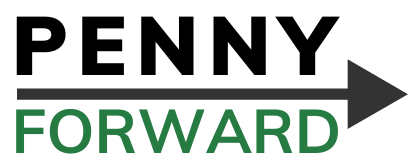Over the last month, I’ve been writing about starting your own small business and managing money like a pro. Think of it as taking a hobby you love and making it pay the bills, but also making sure you’re not spending more than you’re earning.
This week, I’m diving into something called a balance sheet. Imagine it’s like a snapshot of your business’s financial health—what you own, what you owe, and what’s left for you (pretty important, right?).
A balance sheet lists:
- Assets: This is all the stuff your business owns that has value, like cash in the bank, any equipment you bought, or inventory.
- Liabilities: These are your debts or what you owe to others, like loans or bills you need to pay.
- Total Equity: Think of this as your piece of the pie. It’s what’s left over for the business owner once all the debts are paid off.
Here is a real life example from my startup business, Analog Archivers.
Balance Sheet
Analog Archivers
As of 2024-02-05
| ACCOUNT NUMBER | ACCOUNTS | Feb 5, 2024 |
| Assets | ||
| Cash and Bank | ||
| 360 Checking (738) | $48.95 | |
| Total Cash and Bank | $48.95 | |
| Other Current Assets | ||
| Total Other Current Assets | $0.00 | |
| Long-term Assets | ||
| Equipment | $585.06 | |
| Total Long-term Assets | $585.06 | |
| Total Assets | $634.01 | |
| Liabilities | ||
| Current Liabilities | ||
| Total Current Liabilities | $0.00 | |
| Long-term Liabilities | ||
| Total Long-term Liabilities | $0.00 | |
| Total Liabilities | $0.00 | |
| Equity | ||
| Retained Earnings | ||
| Profit between Jan 1, 2024 and Feb 5, 2024 | ($304.70) | |
| Owner’s Equity | $938.71 | |
| Total Retained Earnings | $634.01 | |
| Total Equity | $634.01 |
Let’s break this down. At the time this balance sheet was created by the Wave bookkeeping software, I owned $585.06 worth of equipment I’d just bought. I also had $48.95 in the bank, which I could choose to spend any way I wanted. I didn’t have any debts, so my business was pretty healthy, but I’d spent $938.71 of my own money to get it started, so I hadn’t made enough to pay myself back yet. In the end, Analog Archivers was only worth $634.01 that day. As I build my customer list, though, it won’t take much for me to start earning a profit.
In essence, the balance sheet is your business’s financial report card. It helps you understand how much money you’ve got to play with, how much your stuff (like equipment and goods) is worth, and how much you need to break even or sell your business without losing money.
Understanding this can help you make smarter decisions, and who knows, it might just set you on the path to business success. And, if you’d like help putting this into practice for yourself, consider joining Penny Forward to access our one to one financial counseling services, where we’d be glad to help you learn to manage your money like a pro.
Happy bookkeeping,
Chris Peterson, AFC®
Founder and CEO, Penny Forward

Leave a Reply